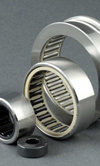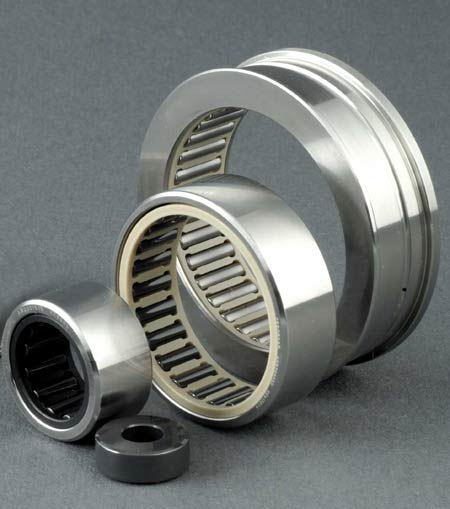Ceramic bearings
 In recent times the push behind developments in bearings containing a ball or rolling element has been that of improved, 'cleaner' steels. Because of its high hardness and therefore resistance to wear, chromium steel has been difficult to beat, and reducing the level of impurity - the number, type and size of any rogue inclusions - to improve the fatigue resistance has made them more so. In many cases when bearing selection is driven, at least in part by cost, mass-produced steel components of this type are perhaps the only solution. However, if cost is factored out of the decision and performance offered an enhanced role, ceramics in one form or another may offer a better solution.
In recent times the push behind developments in bearings containing a ball or rolling element has been that of improved, 'cleaner' steels. Because of its high hardness and therefore resistance to wear, chromium steel has been difficult to beat, and reducing the level of impurity - the number, type and size of any rogue inclusions - to improve the fatigue resistance has made them more so. In many cases when bearing selection is driven, at least in part by cost, mass-produced steel components of this type are perhaps the only solution. However, if cost is factored out of the decision and performance offered an enhanced role, ceramics in one form or another may offer a better solution.
Ceramic bearings fall into two distinct types - full ceramic units when outer race, inner race and balls are all made from a ceramic, and 'hybrid' units when for reasons of cost, only the inner ball/rolling elements are ceramic. With the latter, although the inner and outer races will be superfinished in steel, the full assembly still retains many of the advantages of the full ceramic. Furthermore, bearing ceramic materials can be classified into three common materials used: silicon nitride (Si3N4) - which seems to be the most favoured currently -silicon carbide (SiC) and zirconium dioxide (ZrO2), sometimes referred to as zirconia. The first two are black in colour while the third is white, but despite these differences, all have significant advantages over steel.
It has always bemused me that a ball or roller bearing had any significant friction because, at a theoretical level at least, only point contact with no relative sliding motion exists between the inner race and the ball or roller, or the ball/roller and the outer race. Think of it as an inner gear of an epicyclic gearbox surrounded by star wheels and an outer annulus, and you will understand that in theory, since there is no sliding motion, no friction should be present.

However, as well as the inevitable small amount of slip, energy will be needed to rotate the roller around first its own axis and then around the axis of rotation of the whole assembly. Ball or roller inertia therefore plays an important part in the 'friction' within a ball or rolling element bearing. So when the density of the ball or roller is around 40% that of steel, this constitutes a major reduction in the energy required to move them. Also, the forces in the bearing and its 50% greater stiffness over steel produce less distortion and generate less heat than its steel equivalent.
This reduced amount of heat, and the lack of steel-on-steel contact generating microwelding between the components, also means that adhesive-type wear will be substantially reduced. Ceramic bearings therefore run cooler and require much less in the way of lubrication than traditional materials.
Lighter weight, reduced friction, less wear and lower operating temperatures all add up to a longer operating life (sometimes by as much as ten times) or greatly improved performance; a sort of win-win-win-win situation, which is difficult to ignore. In the words of a recent UK TV advertisement, "Now you don't often see that do you?"
Fig. 1 - Ceramic bearings
Written by John Coxon